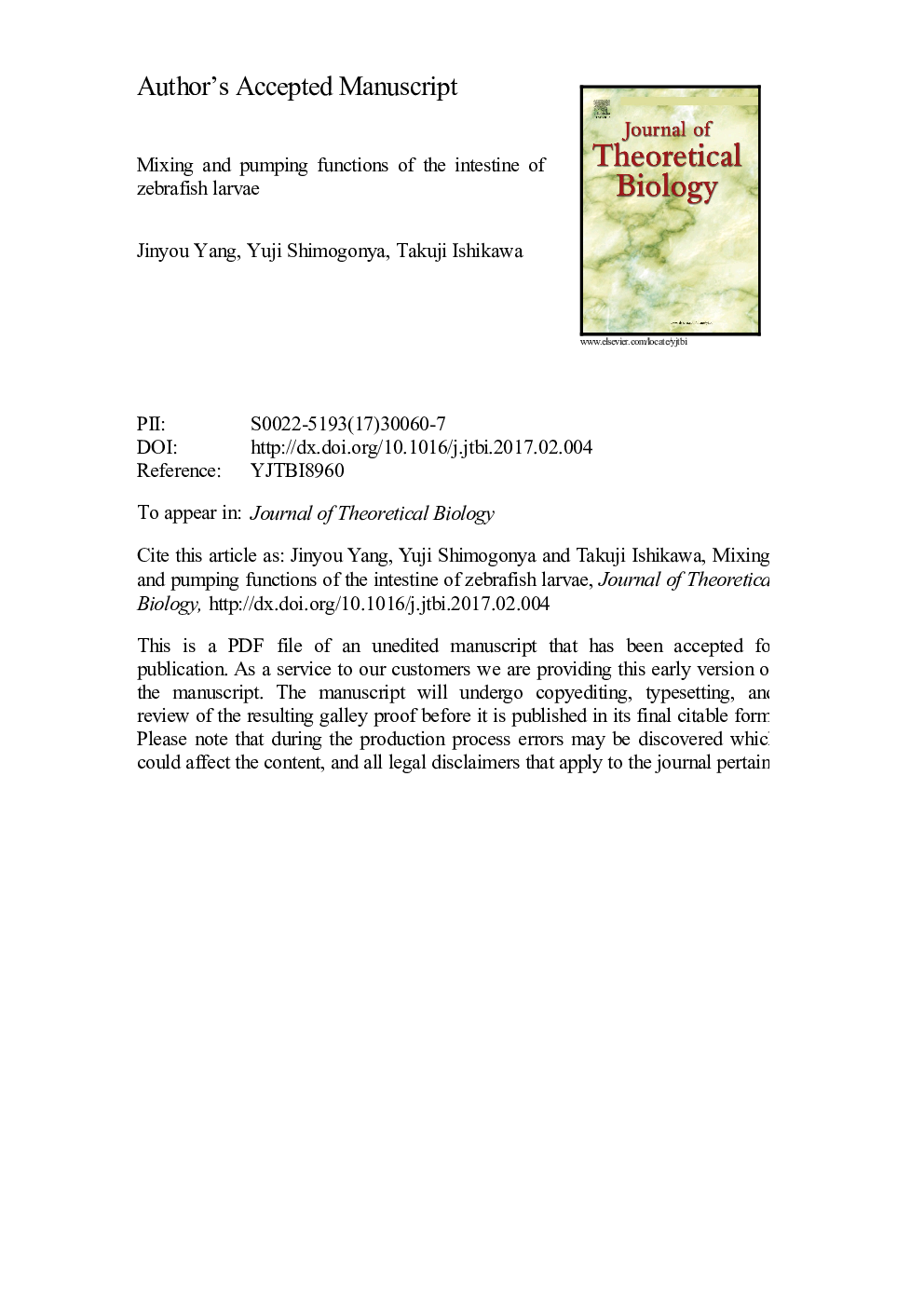| Article ID | Journal | Published Year | Pages | File Type |
|---|---|---|---|---|
| 5760131 | Journal of Theoretical Biology | 2017 | 20 Pages |
Abstract
Due to its transparency, the intestine of zebrafish larvae has been widely used in studies of gastrointestinal diseases and the microbial flora of the gut. However, transport phenomena in the intestine of zebrafish larvae have not been fully clarified. In this study, therefore, transport caused by peristaltic motion in the intestine of zebrafish larvae was investigated by numerical simulation. An anatomically realistic three-dimensional geometric model of the intestine at various times after feeding was constructed based on the experimental data of Field et al. (2009). The flow of digested chyme was analyzed using the governing equations of fluid mechanics, together with peristaltic motion and long-term contraction of the intestinal wall. The results showed that retrograde peristaltic motion was the main contributor to the mixing function. The dispersion caused by peristalsis over 30 min was in the order of 10â12 m2/s, which is greater than the Brownian diffusion of a sphere of 0.4 µm diameter. In contrast, anterograde peristaltic motion contributed mainly to the pumping function. The pressure decrease due to peristalsis was in the order of millipascals, which may reduce the activation and maintenance heat of intestinal muscle. These findings enhance our understanding of the mixing and pumping functions of the intestine of zebrafish larvae.
Related Topics
Life Sciences
Agricultural and Biological Sciences
Agricultural and Biological Sciences (General)
Authors
Jinyou Yang, Yuji Shimogonya, Takuji Ishikawa,
